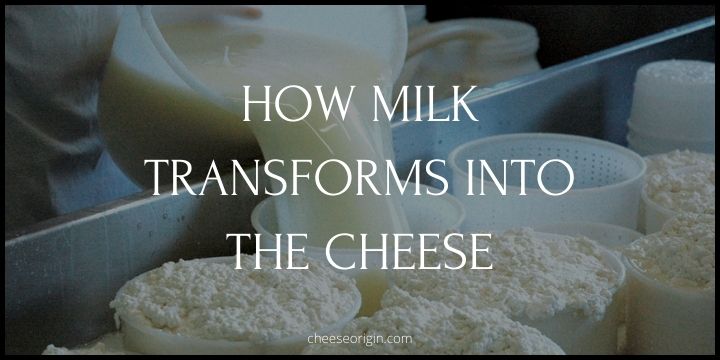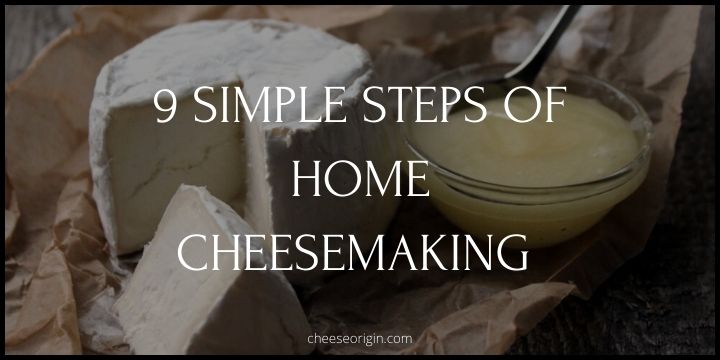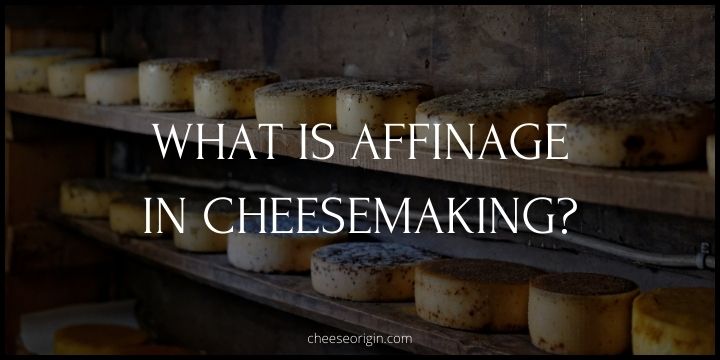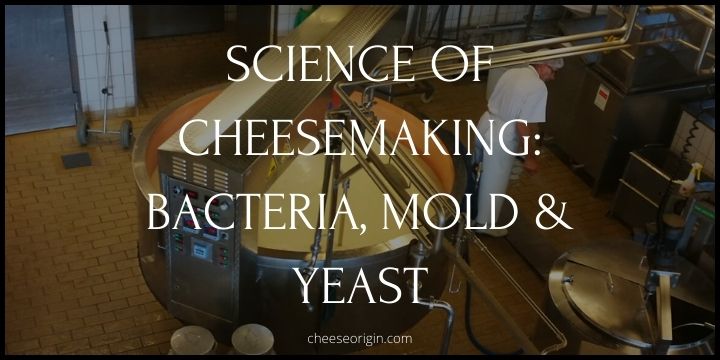What is Rennet in Cheesemaking?
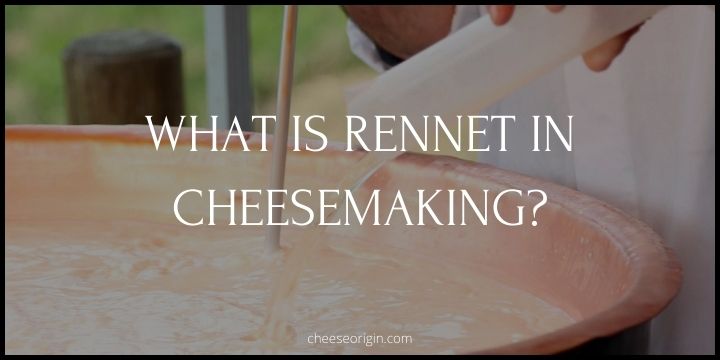
The world of cheesemaking is rich with age-old traditions, artisanal skills, and a dash of science. At the heart of this fascinating process is a seemingly magical ingredient known as rennet.
This crucial component, often shrouded in mystery for those outside the cheesemaking sphere, plays a pivotal role in transforming liquid milk into sumptuous blocks of cheese.
Whether you’re a cheese connoisseur eager to understand more about your favorite food or an aspiring cheesemaker ready to embark on your first culinary adventure, unraveling the secrets of rennet will take you one step closer to the essence of cheesemaking.
What is Rennet?
Rennet is a complex set of enzymes that plays a key role in the process of cheesemaking. It’s derived from the stomach lining of ruminant mammals, such as cows, goats, and sheep.
The primary enzyme in rennet, chymosin, is responsible for coagulating the milk, causing it to separate into solids (curds) and liquid (whey). This is an essential step in the cheesemaking process.
In addition to traditional animal-based rennets, there are also vegetable rennets derived from certain plants with coagulating properties and microbial rennets produced by bacteria or yeast. Furthermore, genetically engineered rennet, created by inserting genes from animals into bacteria, yeasts, or molds, is also used in cheesemaking.
Rennet helps in achieving the desired texture in many types of cheeses and is a vital ingredient in the cheesemaking process, contributing significantly to the flavor and quality of the final product.
The role of Rennet
Rennet consists of enzymes that enable milk to coagulate more quickly (turning milk into curds). It takes only a tiny amount of rennet to coagulate a batch of cheese.
You can think of adding rennet like ‘flipping on a switch.’
- Before you add rennet you have milk, in which solids are suspended in water, repelling one another (hence the milky look of milk).
- Then you ‘flipped on the switch’ by adding rennet. All of a sudden, the milk solids come together to form a curd.
Before Renneting
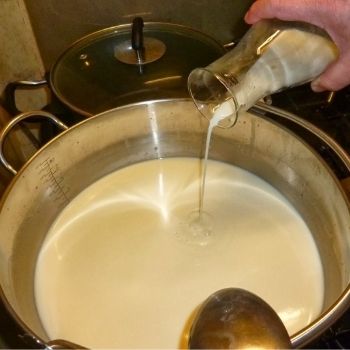
After Renneting
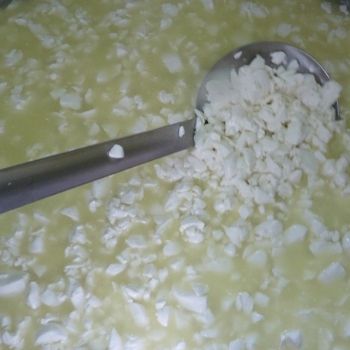
Also read: The Amount of Milk Required to Make Cheese
The 4 Types of Rennet
| Type of Rennet | Source | Description |
|---|---|---|
| Animal Rennet | The stomach lining of ruminant mammals (e.g., cows, goats, sheep) | traditional form of rennet, contains the enzyme chymosin which coagulates milk |
| Vegetable Rennet | Certain plants with coagulating properties (e.g., fig tree bark, thistle) | A plant-based alternative to animal rennet, used in making some types of cheese |
| Microbial Rennet | Produced by bacteria or yeast | A more readily available alternative to animal rennet, but can sometimes result in a bitter taste if cheese is aged for a long time |
| Genetically Engineered Rennet | Created by inserting genes from animals into bacteria, yeasts, or molds | Produces a consistent product and eliminates the need for animal-derived rennet, widely accepted in the cheesemaking industry |
1. Animal Rennet
Sourced from the lining of the fourth stomach (abomasum) of ruminant mammals such as cows, goats, and sheep, it contains the enzyme chymosin, which is renowned for its milk-coagulating properties.
This natural coagulant plays an instrumental role in transforming liquid milk into curds, the foundational element of cheese.
The use of animal rennet often contributes to the depth of flavor and the texture of the cheese, characteristics highly prized by cheesemakers and connoisseurs alike.
Despite the advent of alternative sources of rennet, many artisanal cheese producers continue to vouch for animal rennet, cherishing its historical roots and the distinct qualities it imparts to their creations.
2. Vegetable Rennet
Harvested from certain coagulant-rich plants, this type of rennet is often favored by those seeking vegetarian or vegan-friendly cheeses.
The enzymes in vegetable rennet create a coagulation process similar to that of animal rennet, and while the resulting cheese may have slight variations in flavor and texture, it is a testament to the versatility of nature’s bounty.
Vegetable rennet has opened up the world of cheesemaking to new possibilities, allowing more people to enjoy the craft while adhering to their dietary preferences or principles.
Here are several examples of vegetable rennet:
- Caper leaves
- Lemons
- Fig tree bark
- Mallow
- Stinging nettles
- Ground ivy
- Creeping Charlie
- And members of the Thistle family
3. Microbial Rennet
Microbial rennet is derived from certain types of bacteria, fungi, or yeast. This type of rennet is particularly beneficial as it provides a readily available and cost-effective alternative to animal rennet, making it an attractive option for large-scale cheese production.
There are several different types of microbial rennet, including:
- Rennet derived from the bacteria Mucor miehei: This is one of the most commonly used types of microbial rennet. It’s produced by fermenting the bacteria, which results in an enzyme that can effectively coagulate milk.
- Rennet from the fungus Rhizomucor miehei: This microbial rennet is derived from a specific type of fungus and is known for its strong coagulating properties. However, it can sometimes result in a slightly bitter taste in aged cheeses.
- Rennet from the yeast Kluyveromyces lactis: This yeast-derived rennet is less commonly used but offers another alternative for those looking for non-animal sources of rennet.
While microbial rennet offers several advantages, it’s essential to note that some cheeses made with this type of rennet may not be suitable for vegetarians, as the microorganisms used in production may be grown on media containing animal-derived ingredients.
4. Genetically Engineered Rennet
Genetically engineered rennet, also known as Fermentation-Produced Chymosin (FPC), is a fascinating development in the world of cheesemaking.
This innovation involves the use of genetic engineering techniques to insert the gene responsible for chymosin production into microorganisms such as bacteria, fungi, or yeast.
The resulting organisms produce chymosin during fermentation, which is then isolated and used as rennet in cheese production.
The most notable advantage of FPC is its consistency, as it allows for uniform cheese production without the variability inherent to animal or plant-based rennet sources.
Furthermore, it’s an efficient and sustainable solution that meets the demands of many vegetarians and the large-scale cheese industry alike.
As of now, it’s estimated that over 90% of commercially produced cheeses in the U.S. use FPC, highlighting the significant role it plays in modern cheesemaking.
How to Avoid GMOs in Your Cheese
Avoiding GMOs in cheese can be a bit complex due to the widespread use of genetically engineered rennet in the industry.
However, there are several strategies you can employ:
1. Buy Organic:
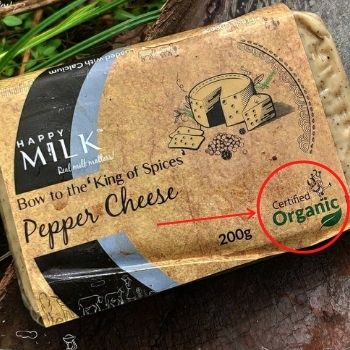
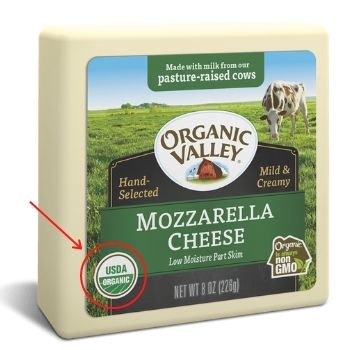
Organic cheeses are made without GMOs, including genetically modified rennet or feed for the dairy cows. Look for the USDA Organic seal to ensure the cheese is genuinely organic.
2. Look for Non-GMO Labels:
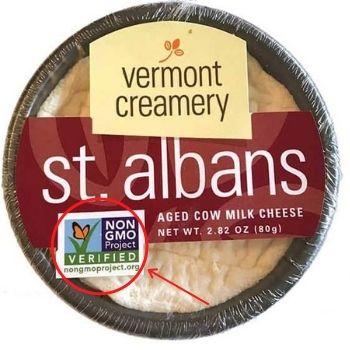
Some cheeses are specifically labeled as non-GMO. This label indicates that the cheese has been made without genetically modified organisms, including rennet.
3. Avoid At-Risk Ingredients:
If a cheese lists ingredients that are often genetically modified, such as certain types of corn or soy, it’s best to avoid them unless they’re specifically labeled as non-GMO.
4. Buy from Local or Trusted Cheesemakers:
Local or trusted cheesemakers are often more transparent about their processes and ingredients. They may also be more likely to use traditional animal or vegetable rennet rather than genetically engineered versions.
5. Avoid Processed Cheeses:
Processed cheeses are more likely to contain GMOs, so it’s best to stick with fresh, natural cheeses.
The truth is, avoiding GMOs in cheese can be challenging as most commercially produced cheeses in the U.S. use genetically engineered rennet. However, by following these tips, you can make more informed choices about the cheese you consume.
Frequently Asked Questions
1. Is rennet in cheese healthy?
Cheese itself is a good source of nutrients like protein, calcium, and vitamin B12. The rennet used in cheese doesn’t significantly contribute to these nutrients, but it does play a crucial role in developing the texture and flavor of cheese.
2. Are calves killed for rennet?
It’s important to note that these calves are not typically killed solely for their rennet. The rennet is usually acquired as a by-product of livestock butchering for meat production. This means that while the practice is tied to the slaughter of animals, the animals are not killed expressly for the purpose of obtaining rennet.
However, the use of animal-derived rennet has been a point of concern for many vegetarians, vegans, and animal welfare advocates. As a result, there has been a significant shift toward using alternatives such as microbial and vegetable rennet, or Fermentation-Produced Chymosin (FPC), which is created using genetically engineered microorganisms.
3. Can cheese be made without rennet?
Yes. For homemade cheeses, acidic substances like vinegar or lemon juice can be used to curdle the milk, creating simple cheeses like ricotta or paneer.
Conclusion
Rennet is a crucial ingredient in cheesemaking that serves to coagulate or curdle the milk, thus facilitating the creation of cheese. Traditionally sourced from the stomach lining of young calves, rennet contains enzymes, primarily chymosin, which allow the milk to separate into solid curds and liquid whey.
However, due to dietary, ethical, or religious reasons, many cheesemakers have shifted towards alternatives to animal-derived rennet. These include vegetable rennet, microbial rennet, and Fermentation-Produced Chymosin (FPC). Additionally, simple homemade cheeses can be made using acidic substances like vinegar or lemon juice.
Regardless of the source, the type of rennet used can significantly influence the final texture and flavor of the cheese. As such, it’s an essential consideration in the art and science of cheesemaking.
Articles you might be interested in:
